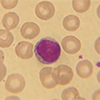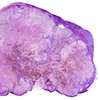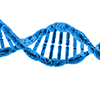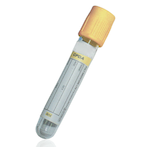Androstenedione (D4-androstenedione)
Specimen Volume
1mL blood (300uL sample)Sample Preparation
Turnaround Time
5 working daysSample Processing In Laboratory
No special requirements.Sample Stability
36 days at 4°C
General Information
Androstenedione is a weak androgen secreted by the adrenals, ovary and testes. It is also produced by peripheral conversion of DHAS. It is used as an aid to diagnosis of hyperandrogenism usually in females or prepubertal children. It has been advocated for the monitoring of replacement steroid therapy in subjects with congenital adrenal hyperplasia (CAH) due to 11β-or 21-hydroxylase deficiency. It is markedly increased in conditions such as CAH and some adrenal tumours. In women with polycystic ovarian syndrome about 60% have elevated androstenedione.
Androstenedione is also useful in diagnosis of 17β-hydroxysteroid dehydrogenase deficiency. Male (XY) babies with this deficiency have female or ambiguous genitalia. Androstenedione is increased relative to testosterone concentration. In infants measurements should be made after stimulation with human chorionic gonadotrophin.
Androstenedione has a diurnal variation, being highest in the morning. There is a cyclical variation in the menstrual cycle; highest values are found around mid-cycle. There is an increase during pregnancy
Patient Preparation
No specific patient preparation.
Notes
Measured as part of a steroid profile containing testosterone and 17-hydroxyprogesterone.
Reference Range
Adults
Female (pre-menopause): 0.9 - 7.5 nmol/L
Female (post-menopause): 0.4 - 2.9 nmol/L
Male (18-40yrs): 1.1 - 5.6 nmol/L
Male (41-67yrs): 0.8 - 4.7 nmol/L
Paediatrics
Neonates: <8.0 nmol/L
Female tanner stage 1: <1.8 nmol/L
Male tanner stage 1: <1.1 nmol/L
Source of Reference Range
University college London hospitalsSpecifications
- EQA Status: UK NEQAS Steroid Hormones
- EQAS Scheme: Yes








